Kenya isn’t just about safaris – it’s a top destination for adventure travel. From paragliding over the Great Rift Valley to climbing Mount Kenya, the country offers thrilling activities set against stunning landscapes. Paragliding has gained popularity, with locations like Kerio Valley and Kijabe Hills offering breathtaking views and ideal flying conditions. Beyond the skies, Kenya’s coastline, national parks, and mountains provide opportunities for hiking, diving, and more.
Key Highlights:
- Paragliding: Tandem flights ($150–$250) and cross-country adventures in spots like Kerio Valley and Ngong Hills.
- Diverse Activities: Climbing Mount Kenya, kitesurfing at Diani Beach, and trekking in Aberdare National Park.
- Eco-Tourism: Many operators support conservation and local communities.
Kenya combines adventure with purpose, making it a must-visit for thrill-seekers. Whether you’re flying high or exploring on foot, the country delivers unforgettable experiences.
How to travel Kenya in 2024 – Ultimate 3 week itinerary 🇰🇪
Why Choose Kenya for Adventure Travel?
Kenya is a standout destination in Africa for adventure seekers, offering much more than the traditional safari experience. Its incredible variety of landscapes and activities ensures that every kind of thrill-seeker finds something exciting. Whether you’re gliding over the Great Rift Valley or climbing Africa’s second-highest peak, Kenya delivers unforgettable adventures paired with breathtaking views.
One of Kenya’s biggest draws is its year-round accessibility. The pleasant climate, with warm days almost all year, makes it perfect for outdoor activities like paragliding and mountain climbing. Let’s dive into what makes Kenya’s landscapes, wildlife, and sustainable tourism practices so appealing.
Diverse Geography and Landscapes
Kenya’s geography is like a natural adventure park, offering a mix of terrains and climates that cater to outdoor enthusiasts. Each region brings its own unique opportunities for exploration.
Take Mount Kenya, for example. Its towering 17,057-foot peak provides climbers with a thrilling challenge, passing through different climatic zones and glaciers on the way to the summit. Not only is it a paradise for hikers, but it’s also a prime spot for paragliding, offering stunning views from above.
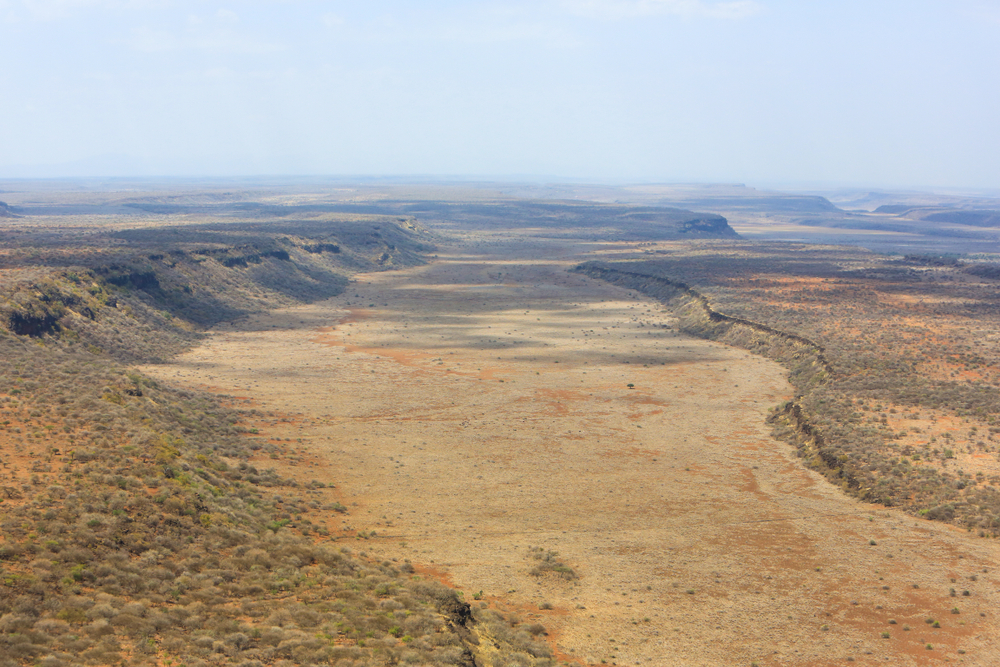
The Great Rift Valley is another gem for adventurers, especially paragliders. Its dramatic escarpments and valleys create perfect thermal conditions, making flights over areas like the Kerio Valley an unforgettable experience. The natural updrafts and scenic landscapes make it one of the best paragliding destinations in the region.
For those who prefer trekking and nature walks, Aberdare National Park offers lush forests, cascading waterfalls, and incredible wildlife. Whether you’re a birdwatcher or simply enjoy the serenity of nature, this park has something for you.
Then there’s Kenya’s 298-mile coastline along the Indian Ocean, a haven for marine adventures. Diani Beach and Watamu Beach are top spots for activities like kitesurfing, scuba diving, and deep-sea fishing. These pristine beaches also serve up a blend of relaxation and cultural experiences.
| Location | Primary Activities | Key Features | Best For |
|---|---|---|---|
| Mount Kenya | Climbing, hiking | 17,057 ft elevation, glaciers | Experienced climbers, trekkers |
| Great Rift Valley | Paragliding, hiking | Thermal updrafts, dramatic escarpments | Paragliding enthusiasts |
| Aberdare National Park | Hiking, wildlife viewing | Waterfalls, montane forests, wildlife | Nature lovers, birdwatchers |
| Coastal Region | Marine sports, beach fun | Coral reefs, warm waters, pristine beaches | Water sports fans, divers |
Adventure and Wildlife Combined
Kenya offers something truly special: the chance to combine adrenaline-pumping activities with incredible wildlife encounters. This blend of adventure and nature is what makes the country so unique.
For instance, paragliding and safari tours in Kenya let you experience the landscape from two perspectives. Imagine soaring over the Great Rift Valley in the morning, taking in the sweeping views from above, and then spending your afternoon on a game drive, spotting the Big Five. This mix of aerial thrills and ground-level wildlife encounters offers a deeper appreciation of Kenya’s ecosystems than a traditional safari alone.
Private conservancies play a big role in this by balancing adventure tourism with conservation. These areas, often located near reserves like the Maasai Mara, limit vehicle numbers and maintain the natural habitat. They also invest a portion of their earnings into local communities, ensuring that tourism benefits both wildlife and people. Many of these conservancies also feature hiking trails and paragliding launch sites, making them perfect for adventure travelers.
Adding to the experience is the opportunity to connect with local cultures. Visits to Maasai or Samburu villages offer a glimpse into traditional dances, pastoralist lifestyles, and their coexistence with wildlife. Along the coast, Swahili culture adds another layer of richness, complementing activities like diving and exploring coral reefs.
Eco-Friendly Tourism and Community Support
Kenya has become a leader in ecotourism, making it an excellent choice for travelers who care about sustainability. Adventure tourism here isn’t just about thrills – it’s about giving back to the environment and local communities.
Many safari lodges and adventure operators have adopted eco-friendly practices, such as using solar power and reducing plastic waste. Even activities like paragliding are designed to benefit local communities. For example, residents often assist with ground operations, providing retrieval services and sharing their knowledge of the area. This collaboration ensures that tourism dollars directly support those living in these regions.
Private conservancies are another example of how Kenya integrates tourism with conservation. By reinvesting earnings into habitat protection and community development, they create a model where adventure travel supports both wildlife and people. If you’re planning a tandem paragliding experience or a multi-activity trip, you can feel good knowing your visit contributes to these efforts.
This focus on responsible tourism makes Kenya especially appealing to modern travelers who want their adventures to have a positive impact. From soaring over the Rift Valley to exploring marine life along the coast, every activity here is tied to a commitment to conservation and community well-being.
Paragliding in Kenya: A Thrilling Soaring Experience
Paragliding in Kenya offers an incredible way to experience the country’s breathtaking landscapes from above. Since the Paragliding Association of Kenya (PAK) was formed in 2018, the sport has grown rapidly, transforming what was once an informal activity into a well-regulated adventure. Today, Kenya ranks among Africa’s top spots for paragliding, drawing thrill-seekers and seasoned pilots from around the globe to glide over dramatic escarpments, vast valleys, and diverse ecosystems.
Kenya’s combination of steady thermals, stunning scenery, and consistent flying conditions makes it a standout destination. The unique geography of the Great Rift Valley, for instance, produces powerful updrafts that lift pilots to impressive heights, while the ever-changing landscapes below create a dynamic visual experience.
Whether you’re a first-timer eager for a tandem paragliding flight or an experienced pilot chasing long-distance adventures, Kenya’s paragliding opportunities cater to all levels. It’s a mix of adrenaline and a deep connection with nature.
Top Paragliding Spots in Kenya
Kenya boasts a variety of paragliding locations, each offering its own charm and flying conditions. These sites have been carefully developed to ensure safety while showcasing the country’s natural beauty.
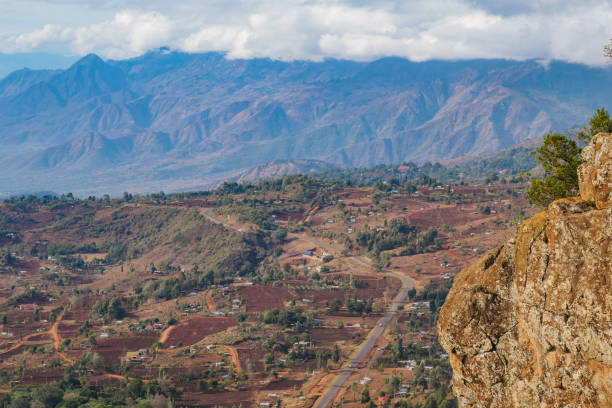
Kerio Valley is Kenya’s most renowned paragliding site and a favorite among pilots. Nestled in the Great Rift Valley, this spot provides consistent thermal conditions ideal for beginners and advanced pilots alike. The valley’s dramatic 3,280-foot (1,000-meter) escarpment generates strong updrafts, enabling cross-country flights that can stretch over 124 miles (200 kilometers). At an altitude of 7,700 feet (2,345 meters), the launch site offers jaw-dropping views of the valley and surrounding highlands.
Kijabe Hills, located just 37 miles (60 kilometers) from Nairobi, is the most accessible site for visitors staying in the capital. This location is perfect for tandem paragliding adventures, with launch points providing stunning views of the Rift Valley escarpment. Its proximity to Nairobi makes it an excellent choice for day trips, and the reliable afternoon thermals are ideal for both training and recreational flights.
Ngong Hills, famously featured in Karen Blixen’s Out of Africa, offers a unique paragliding experience with sweeping views of Nairobi and the plains beyond. The rolling hills generate gentle thermals, making it a great spot for beginners. Flying here feels like a journey through Kenya’s colonial history, adding a layer of cultural richness to the adventure.
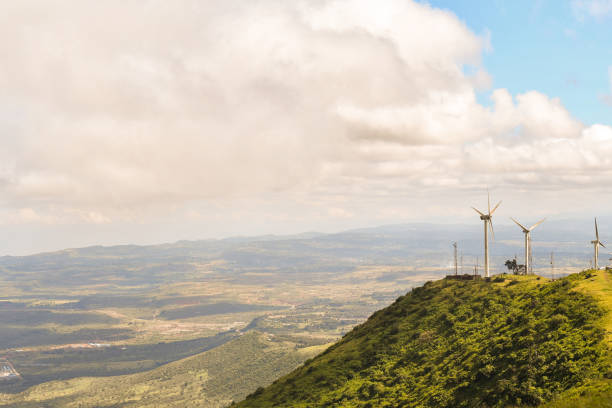
Shimba Hills, situated near the coast in Kwale County, provides a completely different experience. Here, pilots can soar over lush tropical forests with glimpses of the Indian Ocean in the distance. This site is perfect for those seeking coastal paragliding adventures, blending the thrill of flight with Kenya’s coastal charm.
| Location | Elevation | Best Conditions | Ideal For | Key Features |
|---|---|---|---|---|
| Kerio Valley | 7,700 ft (2,345m) | Year-round thermals | XC flights, advanced pilots | 200km+ flights possible |
| Kijabe Hills | 6,890 ft (2,100m) | Afternoon thermals | Tandems, training | 1 hour from Nairobi |
| Ngong Hills | 8,070 ft (2,460m) | Morning/afternoon | Beginners, sightseeing | Historical significance |
| Shimba Hills | 1,480 ft (450m) | Coastal winds | Coastal flying | Ocean views |
These locations showcase the variety and beauty of Kenya’s paragliding scene, offering something for every type of pilot.
Types of Paragliding Adventures
Kenya’s paragliding options cater to a range of skill levels and adventure preferences, ensuring everyone can find a flight that suits them.
Tandem paragliding is ideal for beginners. Flights cost between $150 and $250 for 20 to 45 minutes, pairing passengers with certified instructors who handle all the technical aspects. Popular tandem sites like Kijabe Hills offer scenic flights over the Rift Valley, while coastal spots combine forest and ocean views for a unique experience.
Cross-country paragliding attracts experienced pilots looking for long-distance challenges. Kenya’s thermals make it possible to cover impressive distances, with some flights exceeding 105 miles (170 kilometers) in a single day. The Kerio Valley is the hub for cross-country enthusiasts, thanks to its strong thermals and favorable winds. These flights require advanced skills and specialized gear but reward pilots with unparalleled views of Kenya’s landscapes.
Hike and fly adventures combine trekking with paragliding, offering a dual thrill. These trips often involve hiking to remote launch sites, such as the Aberdare Mountains or Mount Kenya, followed by flights back to lower elevations. These multi-day adventures often include camping and wildlife encounters, making them a favorite for those seeking a more immersive experience.
For those aiming to master the sport, training courses provide a structured path to becoming an independent pilot. Schools certified by PAK offer programs covering everything from ground handling to meteorology and safety. These courses typically last 10 to 14 days and include both theory and practical flying sessions.
With such a variety of experiences available, there’s something for everyone in Kenya’s paragliding scene.
Safety Rules and Regulations
Since 2018, the Paragliding Association of Kenya has implemented strict safety protocols to ensure all operations meet international standards. These measures give both beginners and seasoned pilots confidence in their flying adventures.
Key safety practices include:
- All instructors must hold PAK certification and undergo extensive training.
- Weather conditions are assessed using professional meteorological tools.
- Equipment is regularly inspected and must meet international standards.
- Emergency response procedures and rescue protocols are standardized.
Kenya’s weather can change quickly, especially during transitional seasons, making professional weather assessments crucial. Reserve parachutes are mandatory, and radio communication systems keep pilots in touch with ground crews throughout their flights.
Emergency response systems are in place at all PAK-certified sites. Ground crews are trained in rescue techniques and maintain contact with local emergency services. Many popular locations also feature designated landing zones and retrieval systems, such as motorcycles (boda bodas), to transport pilots from remote areas.
The association also promotes ongoing education through safety seminars and incident reporting systems, ensuring a culture of safety across Kenya’s paragliding community.
Combining Paragliding with Other Adventure Activities
After exploring Kenya’s top paragliding spots, why not take your adventure to the next level? Kenya’s varied landscapes make it an ideal destination to pair paragliding with other activities. Instead of choosing between soaring through the skies or experiencing the land, travelers can enjoy both in thoughtfully planned itineraries. This blend of aerial and ground-based adventures adds an extra layer of excitement to Kenya’s already thrilling paragliding experiences.
Paragliding and Wildlife Safaris
Pairing paragliding with a wildlife safari is becoming a favorite for travelers who want to see Kenya from every angle – both above and on the ground. This unique combination allows visitors to marvel at Kenya’s stunning ecosystems from the air and then experience them up close during a guided safari.
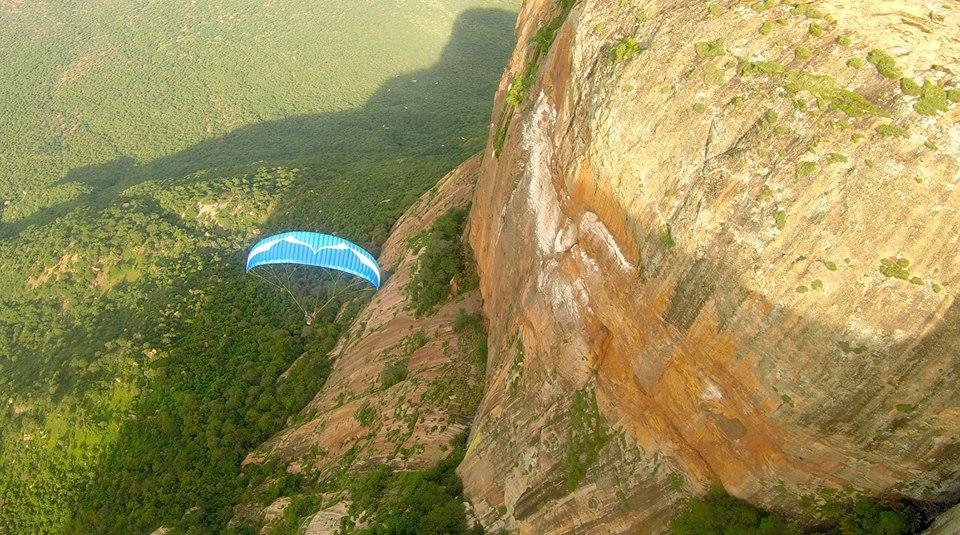
Realiable Operators like Wild Springs Adventures have tapped into this demand with their Paragliding and Safari Adventures, offering travelers the chance to enjoy awe-inspiring flights followed by unforgettable wildlife encounters. Similarly, SkyNomad Kenya Paragliding & Safari provides packages that expertly combine paragliding thrills with safari tours, making it easier to plan your adventure.
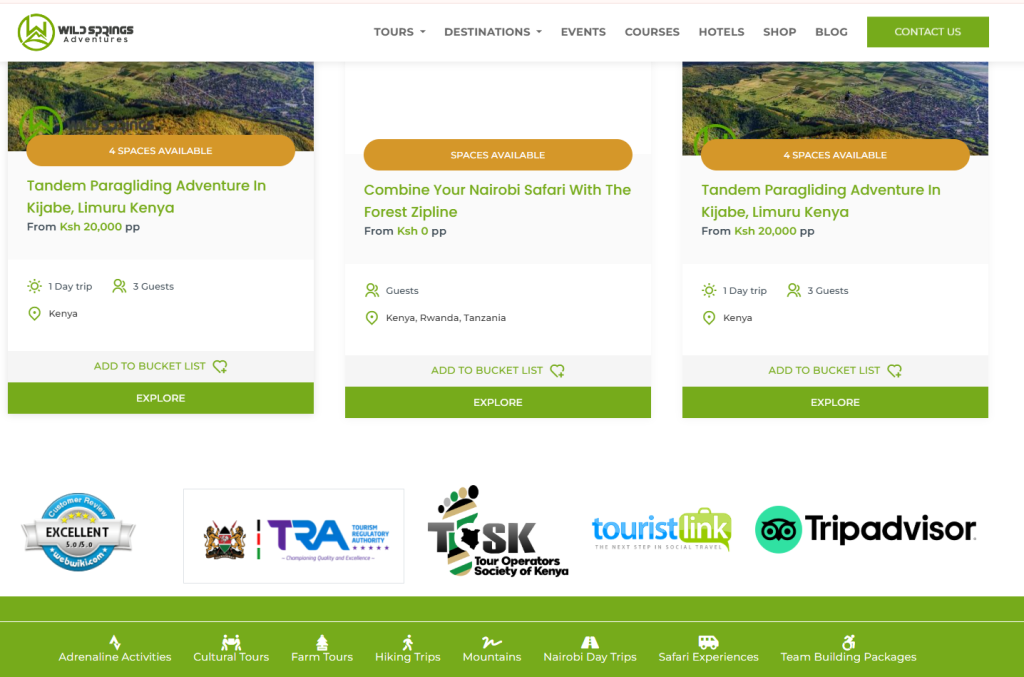
A typical day might start with a morning paragliding tandem experience. Glide over breathtaking landscapes of Kijabe hill in Great Rift Valley. Threafter, enjoy a game drive in one of Kenya’s iconic reserves, where you can spot lions, elephants, or giraffes in their natural habitat. This shift from soaring above the scenery to ground-level exploration offers a unique perspective that appeals to both thrill-seekers and nature enthusiasts.
To make the most of this experience, timing is key. The best seasons offer ideal conditions for both wildlife viewing and stable paragliding flights. Most of our Tandem Paragliding Packages include eco-lodge accommodations conveniently located near paragliding sites and wildlife reserves. Ensuring you spend less time traveling and more time immersed in adventure.
Planning Your Adventure Travel in Kenya
Getting ready for an adventure in Kenya, especially one that includes paragliding, requires thoughtful planning. From timing your trip to preparing for Kenya’s diverse landscapes and weather, every detail matters. If you’re gearing up for your first tandem paragliding flight or putting together a multi-week itinerary that combines flying with safaris, understanding the logistics will make your experience seamless and unforgettable.
Best Time to Visit and Weather Conditions
If paragliding is on your agenda, timing your visit to Kenya’s dry seasons – June to October or December to March – is key. These months offer the best conditions, with stable thermals and clear skies at renowned spots like Kerio Valley and Kijabe Hills.
During the June to October stretch, temperatures at paragliding hotspots range from 68°F to 82°F (20°C to 28°C). This period is ideal for flying, with consistent updrafts forming between 10:00 AM and 4:00 PM. The northeast trade winds during these months create excellent opportunities for cross-country flights, with some pilots covering more than 60 miles (100 kilometers).
The December to March season, while slightly warmer – reaching up to 86°F (30°C) at lower elevations – can be less predictable. Afternoon thunderstorms are more common, requiring some flexibility in scheduling. Many seasoned paragliders prefer the June-October window for its reliability and longer flying days.
Rainy seasons (March to May and November) pose significant challenges. Heavy rains, strong winds, and unpredictable weather make paragliding unsafe during these times. However, these months are perfect for exploring other activities, such as hiking through Mount Kenya’s lush forests or visiting coastal areas, where the weather patterns differ from inland regions.
If you’re combining paragliding with a safari, the dry seasons are doubly rewarding. Wildlife tends to gather around water sources, making it easier to spot animals, while the clear skies enhance both your flying and photography experiences.
Booking Paragliding Flights and Tours
To secure your spot during peak paragliding seasons, it’s wise to book 2-3 weeks ahead, especially for popular locations like Kijabe Hills, which can be fully booked during July and August. When choosing an operator, look for those with current PAK certification, a strong safety record. Tandem paragliding flights usually cost between $150 and $250, depending on factors like flight duration, location, and extras such as video recordings or transportation. Explore our Tandem Paragliding Packages.
Many operators offer package deals that bundle paragliding with other activities, accommodations, and meals. These packages often include stays at eco-lodges near launch sites, ground transportation in 4WD vehicles, and meals featuring local dishes. For those looking to learn the ropes, multi-day packages with paragliding instruction are also available.
Payment and cancellation policies vary by operator. A 50% deposit is typically required when booking, with the balance due 48 hours before the flight. Weather-related cancellations are usually rescheduled without penalties, but personal cancellations may result in fees of 25-50% of the total cost.
Before booking, confirm what equipment is provided. Reputable operators supply essentials like helmets, harnesses, and reserve parachutes. However, you’ll need to bring appropriate clothing, such as closed-toe shoes, long pants, and layers to handle varying temperatures at different altitudes. Once your booking is confirmed, it’s time to focus on the logistics of navigating Kenya’s terrain.
Travel Logistics and Safety Tips
With your paragliding plans in place, the next step is organizing travel logistics and ensuring safety throughout your adventure. Most international flights land at Jomo Kenyatta International Airport in Nairobi, the main entry point for travelers.
Reaching paragliding sites like Kerio Valley often involves a 4-5 hour drive from Nairobi. Many operators include transportation in their packages, typically using local drivers who are familiar with rural roads.
Accommodation options near flying sites range from simple guesthouses to upscale eco-lodges. Some operators even offer their own lodging near launch sites, providing easy access, equipment storage, and basic amenities like local meals and communal spaces where pilots can share stories and plan flights.
Safety precautions are crucial, both for paragliding and general travel. If you’re arriving from a country with yellow fever, you’ll need proof of vaccination. Malaria prophylaxis is also recommended for certain regions. Make sure your travel insurance covers adventure sports, as standard policies often exclude activities like paragliding.
In remote areas, communication and connectivity can be spotty. While major towns usually have reliable cell service, valleys and mountainous regions may not. Let your operator know if you have specific communication needs, and consider buying a local SIM card for extended stays.
When it comes to currency and payments, rural areas often operate on cash transactions in Kenyan Shillings (KES). While major operators accept credit cards and mobile payment options like M-Pesa, smaller services and tips usually require cash. ATMs are available in larger towns but may be scarce near remote paragliding spots.
Lastly, showing cultural respect can enrich your trip. Many paragliding sites are near traditional communities that might be curious about your activities. Being polite, asking permission before taking photos, and supporting local businesses not only enhance your experience but also contribute to sustainable tourism. Planning your logistics carefully will ensure you can fully enjoy both the thrill of paragliding and the beauty of Kenya’s landscapes and wildlife.
Conclusion: Soaring Beyond the Ordinary
Kenya’s adventure travel takes exploration to a whole new level, offering far more than the classic safari experience. Adventure travel in Kenya has grown into a dynamic mix of thrills, blending activities like paragliding over the Great Rift Valley with unforgettable wildlife encounters and rich local traditions. This isn’t just about chasing adrenaline – it’s about experiencing Kenya from entirely new perspectives. If you’ve been searching for a destination that redefines adventure, Kenya is calling.
The country’s flying experiences are nothing short of world-class. With record-breaking cross-country flights and high-altitude launches, Kenya delivers some of Africa’s most breathtaking aerial adventures. Picture yourself soaring over landscapes teeming with wildlife, with the vast expanse of the savanna stretching out below you.
What truly makes paragliding in Kenya stand out is how it seamlessly connects with the broader travel experience. Imagine gliding above herds of elephants and then touching down to explore conservancies that directly benefit local communities. This combination of adventure and conservation creates travel moments that feel both exhilarating and meaningful. Thanks to updated regulations and professional operators, these experiences are now safer and more accessible than ever. Whether you’re trying a tandem flight for the first time or embarking on a multi-day flying safari, Kenya offers top-tier standards for every type of adventurer.
But the excitement doesn’t stop at paragliding. Kenya’s dramatic landscapes provide endless opportunities for adventure. From hiking and rock climbing to water sports along the coast, the variety ensures there’s something for every thrill-seeker. All of this is wrapped into one extraordinary destination.
And here’s the best part: your adventure supports more than just your love of travel. Choosing Kenya means contributing to sustainable tourism efforts that protect its stunning landscapes and iconic wildlife. It’s travel with a purpose, where every thrill helps preserve the beauty that makes Kenya so special.
FAQs
What is the best time of year to go paragliding and enjoy other adventure activities in Kenya?
The prime time to visit Kenya for paragliding and other outdoor adventures falls during the dry months: June to October and January to March. During these periods, you’ll find clear skies, steady winds, and excellent weather – perfect for activities like paragliding.
What’s more, these months coincide with Kenya’s peak wildlife viewing season. This means you can pair the thrill of gliding over breathtaking landscapes, like the Great Rift Valley, with the awe of spotting incredible wildlife on safari. It’s the ultimate combination for an adventure-packed getaway.
How does paragliding in Kenya benefit local communities and support conservation efforts?
Paragliding in Kenya brings a host of advantages to local communities and conservation efforts. It plays a key role in stimulating the local economy by generating jobs, supporting small businesses, and drawing tourists to areas that often lack development. The income from tourism frequently goes toward enhancing infrastructure and public services in these regions.
Beyond the economic impact, paragliding also shines a spotlight on wildlife and environmental conservation. Many operators team up with local groups to advocate for eco-conscious tourism and sustainable practices. This collaboration helps protect Kenya’s breathtaking landscapes and rich biodiversity, ensuring they remain intact for generations to come.
What safety precautions are in place for paragliding in Kenya, and how can beginners get started?
Paragliding in Kenya places a strong emphasis on safety, thanks to strict regulations, qualified instructors, and regular equipment inspections. Pilots are trained to monitor weather conditions closely and land promptly if the environment becomes unfavorable. For those new to the sport, starting with certified tandem flights is highly recommended. In tandem flights, an experienced pilot manages the flight, giving you the chance to soak in the experience while picking up the basics.
To begin your paragliding journey, book with a trusted operator, wear suitable gear, and adhere to all safety instructions. Always fly within your skill level, keep an eye on weather updates, and steer clear of unsafe zones. With the right preparation and expert guidance, paragliding in Kenya offers an exciting and secure way to experience the skies!
Related Blog Posts
- Mount Kenya vs Kilimanjaro: Which Peak to Choose?
- The Samburu Special Five
- Mount Kenya Summit Experience
- 15 Must-Visit National Parks in Kenya
Paragliding in Kenya Contacts
+254 729 257 317
+254 721 957 652
Key Takeaways
- Kenya offers a diverse range of thrilling activities, including paragliding, climbing Mount Kenya, and marine sports along the coastline.
- Adventure travel in Kenya combines breathtaking landscapes with eco-friendly tourism that supports local communities and wildlife conservation.
- The best time for adventure travel in Kenya is during the dry seasons from June to October or January to March, ensuring optimal conditions.
- Popular paragliding locations include Kerio Valley, Kijabe Hills, and Ngong Hills, each offering unique experiences and stunning views.
- Paragliding in Kenya engages travelers in exciting adventures while promoting sustainable practices and cultural connections.
Estimated reading time: 18 minutes
